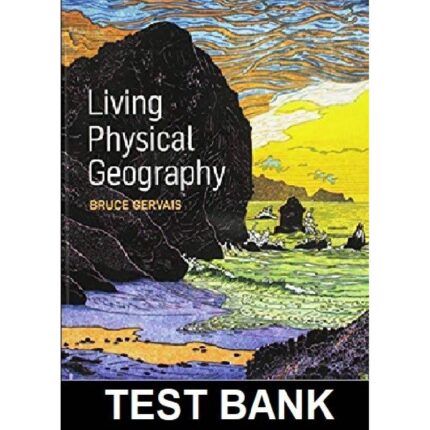Chapter 11
An Urban World
Multiple Choice Questions
1. Central place theory assumes
A. consumers will purchase goods and services from the nearest store.
B. demand for goods and services is insatiable.
C. only motor transport is available.
D. the terrain includes mountains and valleys.
Bloom’s Level: 1. Remember
Section: 11.03
2. In central place theory, threshold refers to
A. the number of people in a central place.
B. the minimum number of consumers necessary for the supply of a product or service.
C. the number of people in a hinterland region.
D. the population of a central place multiplied by the per capita income of the place.
Bloom’s Level: 1. Remember
Section: 11.03
3. The basic sector of an urban area’s economy consists of
A. the activities that bring in money from outside the area.
B. its schools and city government.
C. an efficient transportation system.
D. retail functions that serve local customers.
Bloom’s Level: 1. Remember
Section: 11.02
4. The multiplier effect means that
A. new non-basic jobs will generate additional basic jobs.
B. new basic jobs will generate additional non-basic jobs.
C. service sector jobs will replace manufacturing sector jobs.
D. regardless of city size, there is a constant ratio of basic to non-basic jobs.
Bloom’s Level: 1. Remember
Section: 11.02
5. The estimated urban share of the world population today is approximately
A. 25 percent.
B. 50 percent.
C. 75 percent.
D. 90 percent.
Bloom’s Level: 1. Remember
Section: 11.01
6. In the competitive bidding for urban land,
A. the most accessible parcels command the highest price.
B. land rents are uniform throughout the urban area.
C. all potential bidders have equal rent paying ability.
D. schools, parks, and civic buildings must also participate in the bidding process.
Bloom’s Level: 1. Remember
Section: 11.05
7. Which of the following statements regarding basic and nonbasic activities is true?
A. The percentage of jobs in the basic sector tends to decrease as the size of the city increases.
B. Basic activities must occur in the central business district.
C. Nonbasic activities are heavily dependent upon rail and barge transportation.
D. Non-basic activities bring in money from outside the town.
Bloom’s Level: 1. Remember
Section: 11.02
8. Population density in U.S. central cities is
A. greatest at the center and gradually decreases toward the suburbs.
B. gradually increases from the center to the suburbs.
C. low at the center, highest in the zone just outside the center, and decreases gradually toward the suburbs.
D. relatively uniform and related to economic base.
Bloom’s Level: 2. Understand
Section: 11.05
9. Social areas of large, complex American and Canadian cities show residential segregation based upon
A. social status, income, and ethnicity.
B. educational levels, family status, and ethnicity.
C. race, income status, and family status.
D. social status, family status, and ethnicity.
Bloom’s Level: 1. Remember
Section: 11.05
10. The rank-size rule tells us that the fourth largest urban area in a region will be _______________ the size of the largest urban area.
A. one-quarter
B. one-half
C. one-eighth
D. twice










Reviews
There are no reviews yet.